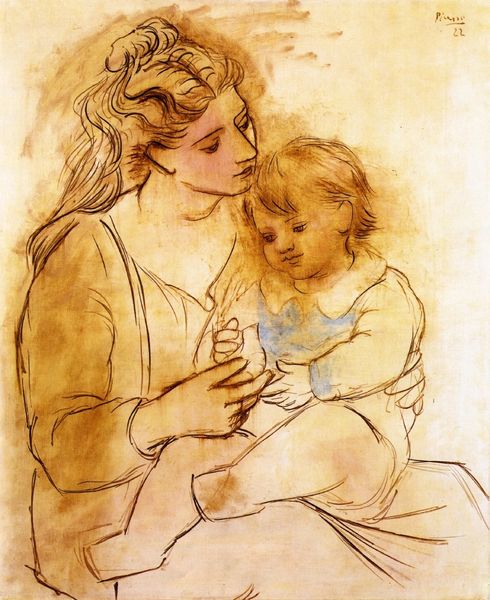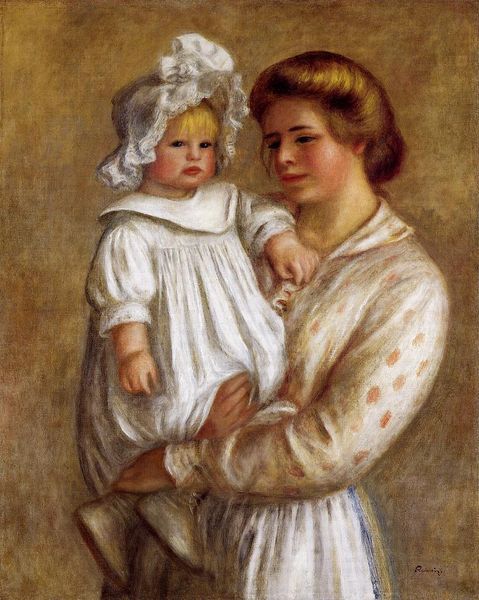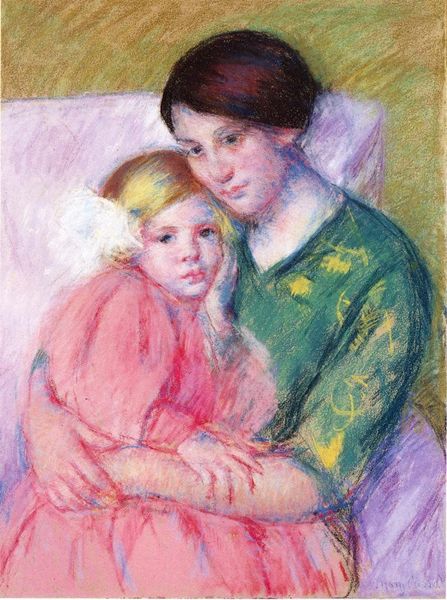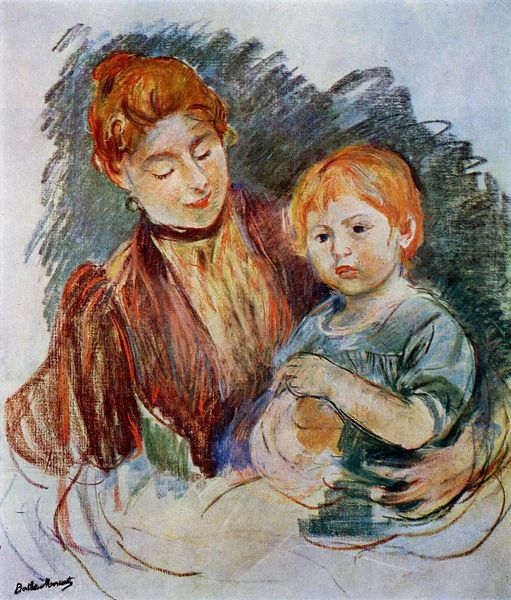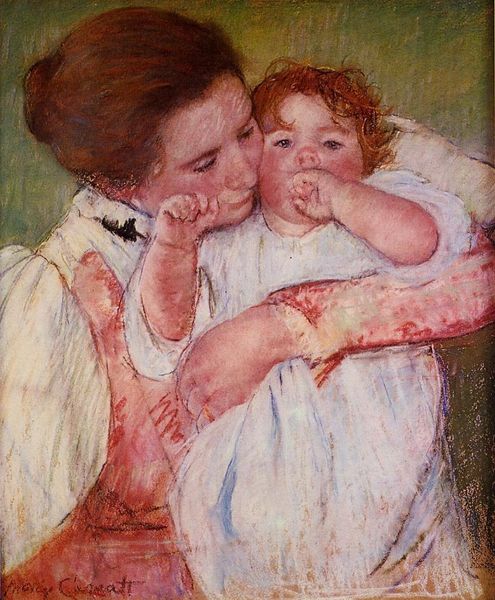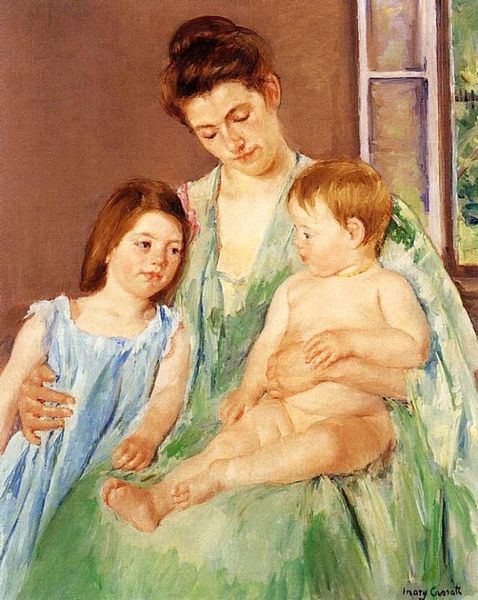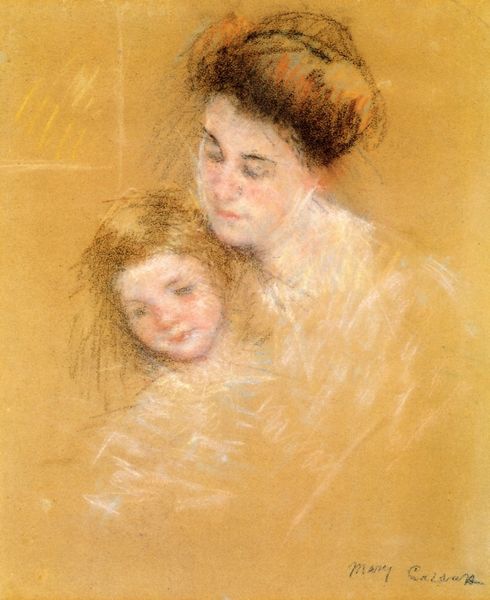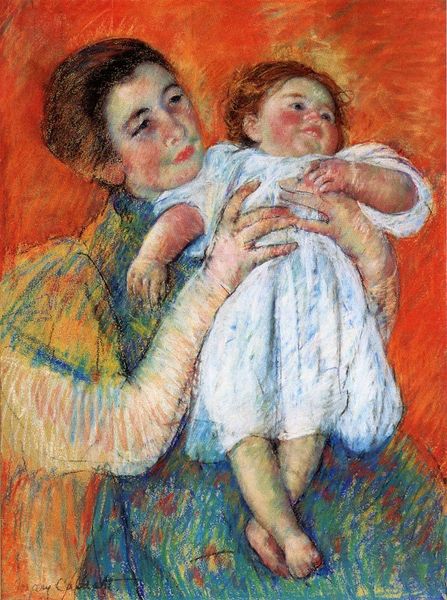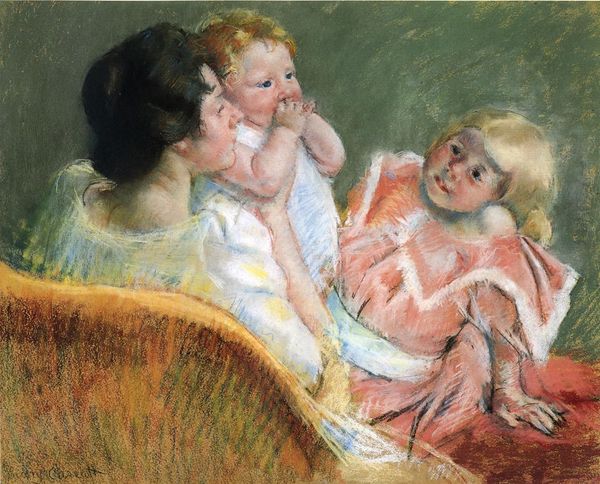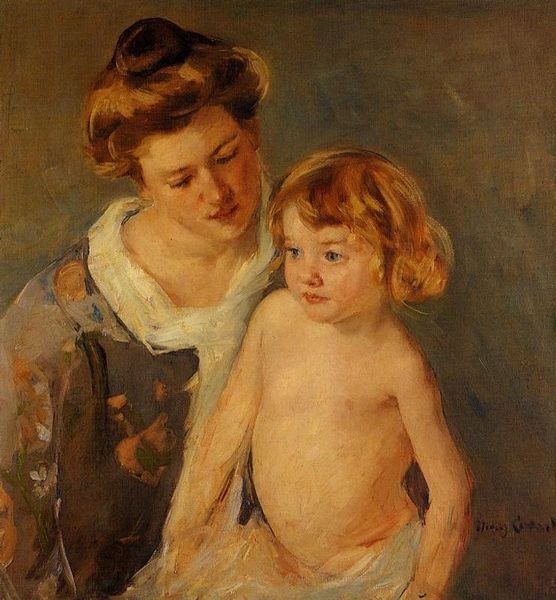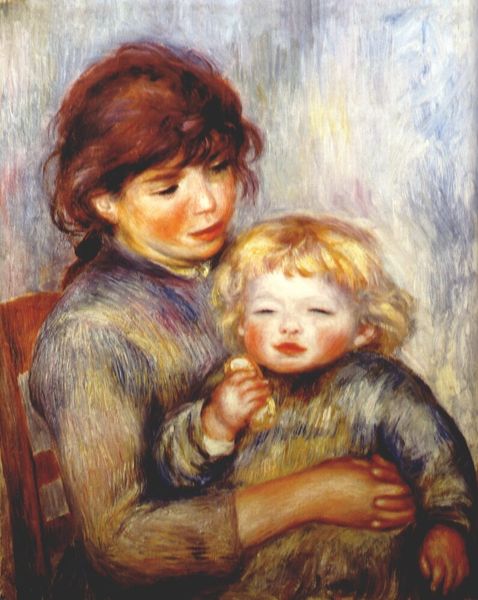
painting, watercolor
#
portrait
#
painting
#
impressionism
#
figuration
#
watercolor
#
intimism
#
group-portraits
#
modernism
#
watercolor
Dimensions: 60 x 69.85 cm
Copyright: Public domain
Curator: I find this 1873 watercolor by Mary Cassatt, titled "A Baby Smiling at Two Young Women," immediately engaging. There's a real sense of warmth radiating from the image. Editor: Yes, the intimacy is striking. Cassatt’s impressionistic style lends the scene an almost dreamlike quality. It's all soft edges and blurred lines; her masterful use of layering brings out form from the ambiguous space. The light seems to concentrate at the heart of the subject--a baby smiling, surrounded by two women. Curator: Cassatt was, of course, deeply invested in depicting the domestic sphere and the roles of women within it. This work certainly contributes to that exploration, particularly her interest in mother-child relationships. In fact, it’s worth noting that Cassatt spent a considerable amount of time in Europe, influenced by the realist movement. The portrayal of women was really starting to change, and there's something of that spirit present. Editor: Definitely. From a purely compositional standpoint, it's brilliant how she's positioned the three figures to form a kind of visual triangle, leading the viewer's eye directly to the baby’s face. And consider the emotional subtext constructed simply through her painterly execution: with her impressionistic blurring of lines, Cassatt has removed sharp contrast to imply gentle, maternal interaction. Curator: Absolutely. And one must think about Cassatt’s status within the Impressionist group. As a woman, her experiences and perspectives were distinct. This painting offers insight into that unique viewpoint, offering a window into private, often overlooked aspects of women's lives at the time. One begins to realize how revolutionary paintings that celebrate women without sensationalizing or eroticizing them must have been in this socio-political moment. Editor: Precisely! It invites contemplation through understated methods: Cassatt understood that structural elements--color, composition, perspective-- could be tools with which to reflect the interior world of women and comment on the structure of gendered experience, but without the blunt-edged polemics. Curator: That intersection between intimate scenes and broader social currents really encapsulates why Cassatt remains so relevant today. It encourages us to re-evaluate historical perspectives on gender. Editor: Agreed. Through close analysis, Cassatt’s formal choices underscore how intimately technique, experience, and politics were actually intertwined within this period.
Comments
No comments
Be the first to comment and join the conversation on the ultimate creative platform.
